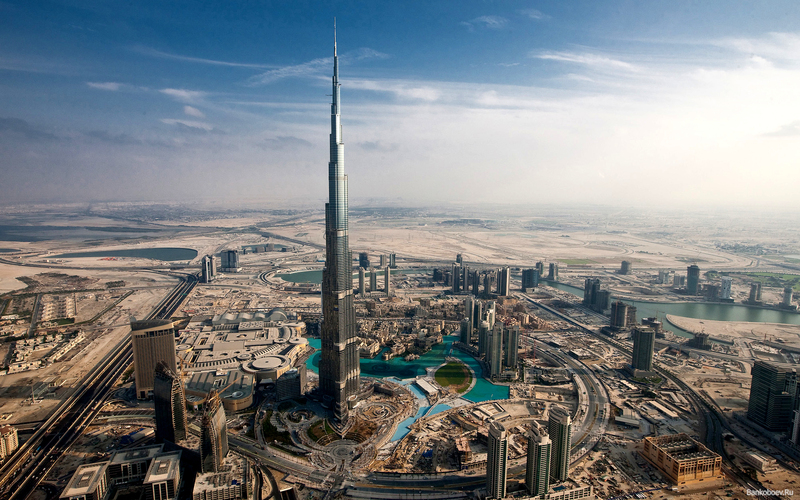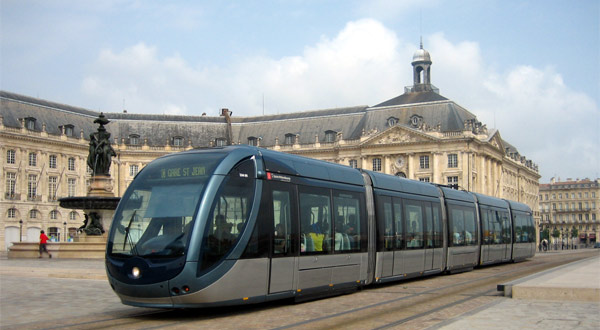Smart cities are already here
At the last MBLT 2013 conference, the issue of the development of urban infrastructure was raised, the issue of creating Cities of the Future. It was this section that impressed me the most! After all, each of us dreamed of living in an ideal city, in which there are no traffic jams, there is no need to wait for a bus for half an hour, no crime, and where in five minutes you can reach the cozy park and relax from this vanity.
It was interesting for me to look at how the century of modern technology influenced the design of cities in the modern world. In this post I will try to consider examples of design and what they led to.

In all the cities, which will be discussed below, I was able to visit, so I diluted the dry facts with my own subjective impressions.
')
I could not find a more comfortable city for living in France. Of course, Paris can boast of its sights, but in Bordeaux is much more cozy and comfortable.
The first thing that catches your eye is a thoughtful public transport infrastructure. For the city, special trams with a unique contactless rail technology were developed, which made it possible not to disfigure the appearance of the historical part of the city:

Bicycle lanes are equipped everywhere, if you don’t have two wheeled friends, then renting a bicycle is not a big deal, because the city’s bicycle rental stations are scattered throughout the city:

For residents of the historic part of the city, bicycles are distributed by the city absolutely free. Both the French institutions and large corporations are engaged in the improvement and development of urban infrastructure.
Naturally, the problem of electricity consumption is quite relevant, especially against the background of the rejection of nuclear power plants. A development plan for the city until 2030 was also developed in this direction, implying the active deployment of alternative sources of energy .
I managed to visit this place quite recently so that the impressions are still fresh. Naturally, I was driving not in pursuit of a smart city, but behind a unique pandan sanctuary. But, in the process of staying, a lot of interesting things turned out. First, there are only two metro lines in Chengdu, but by 2015 it is planned to build three more branches . In terms of works, this is the St. Petersburg metro, which is going to be done in 5 years! As it turned out later, the Chinese have their own five-year plan with a global development plan for the city, which, in addition to the metro, includes projects for the development of green areas, providing the city with quality infrastructure and efficient use of electricity.
The city administration has a separate plan for the development of green areas, taking into account the explosive growth rate of the city:

In addition to the development of the metro, there is an active construction of two transport rings, which will reduce the load on the existing infrastructure.
Special attention should be paid to the design of the energy supply of such a megalopolis. Naturally, this moment also was not missed:

The areas with energy efficiency and renewable energy sources are pink, the main energy consumers are yellow, and the areas with high greenhouse gas emissions are orange.
Now the city is a big construction site, but in collaboration with large corporations, management is constantly improving and re-planning, so that in the near future we can expect a lot of innovations in these areas from China.
I think many of those living in St. Petersburg and Moscow have been to Helsinki and can appreciate the transport and environmental condition of the city. And it is top notch!
Recently, a plan for further development of the city was adopted, focused on the following directions:
As we know, the city is consistently in the top of the rating for the comfort of living, so I will not produce offers, but simply leave the following video here:
But all this is in distant foreign countries, but what about the situation in our homeland? Are there any smart cities in Russia?
When it comes to Russia, the first thing that comes to mind is, of course, Skolkovo :

The authors of the project promise an atmosphere of creativity and innovation, but until the project is completed, it is difficult to draw any conclusions. But, in my opinion, everything looks promising .
But, of course, this is not the only example, many interesting initiatives are now being introduced: contactless travel, traffic flow analysis, and so on.
I hope someday our cities will also unite in themselves the full power of modern technologies and will not yield to the comfort of Helsinki or Bordeaux ...
I think the list of cities, projects and technologies can be continued further. After all, in this post neither Japan, the wonders of automation, nor the UAE with the unmanned metro, nor Singapore with its wonderful infrastructure, nor the USA were affected.
The author of the title picture is blogger and traveler Sergey Dolya .
PS An interesting film about the development of smart cities (in six series, the rest is easy to find on youtube)
PPS An error has crept into the article, as the RocknRolla user correctly noted during the illustration, a photo of the Skolkovo Business School is present, which is not related to the Skolkovo innograd . At the moment, completed one building - Hypercube:


It was interesting for me to look at how the century of modern technology influenced the design of cities in the modern world. In this post I will try to consider examples of design and what they led to.

In all the cities, which will be discussed below, I was able to visit, so I diluted the dry facts with my own subjective impressions.
')
Bordeaux
I could not find a more comfortable city for living in France. Of course, Paris can boast of its sights, but in Bordeaux is much more cozy and comfortable.
The first thing that catches your eye is a thoughtful public transport infrastructure. For the city, special trams with a unique contactless rail technology were developed, which made it possible not to disfigure the appearance of the historical part of the city:

Bicycle lanes are equipped everywhere, if you don’t have two wheeled friends, then renting a bicycle is not a big deal, because the city’s bicycle rental stations are scattered throughout the city:

For residents of the historic part of the city, bicycles are distributed by the city absolutely free. Both the French institutions and large corporations are engaged in the improvement and development of urban infrastructure.
Naturally, the problem of electricity consumption is quite relevant, especially against the background of the rejection of nuclear power plants. A development plan for the city until 2030 was also developed in this direction, implying the active deployment of alternative sources of energy .
Chendu
I managed to visit this place quite recently so that the impressions are still fresh. Naturally, I was driving not in pursuit of a smart city, but behind a unique pandan sanctuary. But, in the process of staying, a lot of interesting things turned out. First, there are only two metro lines in Chengdu, but by 2015 it is planned to build three more branches . In terms of works, this is the St. Petersburg metro, which is going to be done in 5 years! As it turned out later, the Chinese have their own five-year plan with a global development plan for the city, which, in addition to the metro, includes projects for the development of green areas, providing the city with quality infrastructure and efficient use of electricity.
The city administration has a separate plan for the development of green areas, taking into account the explosive growth rate of the city:

In addition to the development of the metro, there is an active construction of two transport rings, which will reduce the load on the existing infrastructure.
Special attention should be paid to the design of the energy supply of such a megalopolis. Naturally, this moment also was not missed:

The areas with energy efficiency and renewable energy sources are pink, the main energy consumers are yellow, and the areas with high greenhouse gas emissions are orange.
Now the city is a big construction site, but in collaboration with large corporations, management is constantly improving and re-planning, so that in the near future we can expect a lot of innovations in these areas from China.
Helsinki
I think many of those living in St. Petersburg and Moscow have been to Helsinki and can appreciate the transport and environmental condition of the city. And it is top notch!
Recently, a plan for further development of the city was adopted, focused on the following directions:
- Urban design
- Infrastructure
- Service
- Communication with residents
As we know, the city is consistently in the top of the rating for the comfort of living, so I will not produce offers, but simply leave the following video here:
Russia
But all this is in distant foreign countries, but what about the situation in our homeland? Are there any smart cities in Russia?
When it comes to Russia, the first thing that comes to mind is, of course, Skolkovo :

The authors of the project promise an atmosphere of creativity and innovation, but until the project is completed, it is difficult to draw any conclusions. But, in my opinion, everything looks promising .
But, of course, this is not the only example, many interesting initiatives are now being introduced: contactless travel, traffic flow analysis, and so on.
I hope someday our cities will also unite in themselves the full power of modern technologies and will not yield to the comfort of Helsinki or Bordeaux ...
I think the list of cities, projects and technologies can be continued further. After all, in this post neither Japan, the wonders of automation, nor the UAE with the unmanned metro, nor Singapore with its wonderful infrastructure, nor the USA were affected.
The author of the title picture is blogger and traveler Sergey Dolya .
PS An interesting film about the development of smart cities (in six series, the rest is easy to find on youtube)
PPS An error has crept into the article, as the RocknRolla user correctly noted during the illustration, a photo of the Skolkovo Business School is present, which is not related to the Skolkovo innograd . At the moment, completed one building - Hypercube:


Source: https://habr.com/ru/post/180165/
All Articles